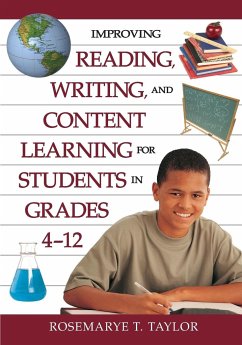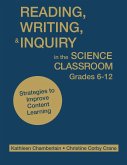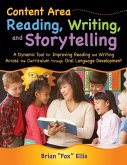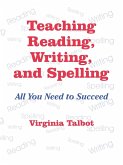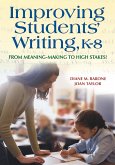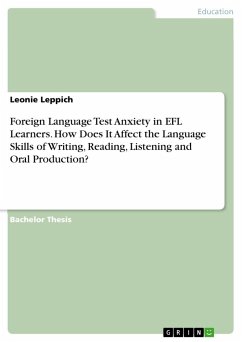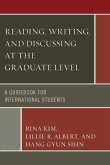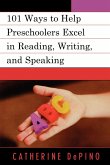Rosemarye T. Taylor
Improving Reading, Writing, and Content Learning for Students in Grades 4-12
27,99 €
inkl. MwSt.
Versandfertig in 1-2 Wochen

14 °P sammeln
Rosemarye T. Taylor
Improving Reading, Writing, and Content Learning for Students in Grades 4-12
- Broschiertes Buch
- Merkliste
- Auf die Merkliste
- Bewerten Bewerten
- Teilen
- Produkt teilen
- Produkterinnerung
- Produkterinnerung
This excellent resource provides a realistic and systematic process that educators can immediately implement for improving reading and writing while enhancing content knowledge and skills.
Andere Kunden interessierten sich auch für
![Reading, Writing, and Inquiry in the Science Classroom, Grades 6-12 Reading, Writing, and Inquiry in the Science Classroom, Grades 6-12]() Kathleen ChamberlainReading, Writing, and Inquiry in the Science Classroom, Grades 6-1231,99 €
Kathleen ChamberlainReading, Writing, and Inquiry in the Science Classroom, Grades 6-1231,99 €![Content Area Reading, Writing, and Storytelling Content Area Reading, Writing, and Storytelling]() Brian EllisContent Area Reading, Writing, and Storytelling49,99 €
Brian EllisContent Area Reading, Writing, and Storytelling49,99 €![Teaching Reading, Writing, and Spelling Teaching Reading, Writing, and Spelling]() Virginia TalbotTeaching Reading, Writing, and Spelling40,99 €
Virginia TalbotTeaching Reading, Writing, and Spelling40,99 €![Improving Students' Writing, K-8 Improving Students' Writing, K-8]() Diane M. BaroneImproving Students' Writing, K-835,99 €
Diane M. BaroneImproving Students' Writing, K-835,99 €![Foreign Language Test Anxiety in EFL Learners. How Does It Affect the Language Skills of Writing, Reading, Listening and Oral Production? Foreign Language Test Anxiety in EFL Learners. How Does It Affect the Language Skills of Writing, Reading, Listening and Oral Production?]() Leonie LeppichForeign Language Test Anxiety in EFL Learners. How Does It Affect the Language Skills of Writing, Reading, Listening and Oral Production?17,95 €
Leonie LeppichForeign Language Test Anxiety in EFL Learners. How Does It Affect the Language Skills of Writing, Reading, Listening and Oral Production?17,95 €![Reading, Writing, and Discussing at the Graduate Level Reading, Writing, and Discussing at the Graduate Level]() Rina KimReading, Writing, and Discussing at the Graduate Level39,99 €
Rina KimReading, Writing, and Discussing at the Graduate Level39,99 €![101 Ways to Help Preschoolers Excel in Reading, Writing, and Speaking 101 Ways to Help Preschoolers Excel in Reading, Writing, and Speaking]() Catherine Depino101 Ways to Help Preschoolers Excel in Reading, Writing, and Speaking42,99 €
Catherine Depino101 Ways to Help Preschoolers Excel in Reading, Writing, and Speaking42,99 €-
-
-
This excellent resource provides a realistic and systematic process that educators can immediately implement for improving reading and writing while enhancing content knowledge and skills.
Produktdetails
- Produktdetails
- Verlag: Corwin
- Seitenzahl: 130
- Erscheinungstermin: 14. September 2006
- Englisch
- Abmessung: 254mm x 178mm x 7mm
- Gewicht: 260g
- ISBN-13: 9781412942270
- ISBN-10: 1412942276
- Artikelnr.: 22151262
- Herstellerkennzeichnung
- Libri GmbH
- Europaallee 1
- 36244 Bad Hersfeld
- gpsr@libri.de
- Verlag: Corwin
- Seitenzahl: 130
- Erscheinungstermin: 14. September 2006
- Englisch
- Abmessung: 254mm x 178mm x 7mm
- Gewicht: 260g
- ISBN-13: 9781412942270
- ISBN-10: 1412942276
- Artikelnr.: 22151262
- Herstellerkennzeichnung
- Libri GmbH
- Europaallee 1
- 36244 Bad Hersfeld
- gpsr@libri.de
Rosemarye T. Taylor has a rich background that includes middle and high school teaching and school administration. She was a reading, language arts, and Spanish teacher and also served as a middle and high school administrator, and district-level administrator in Georgia and Florida. In private sector management, she was director of professional development for Scholastic, Inc., New York. Currently, she is associate professor of educational leadership at the University of Central Florida in Orlando. Much of her success is due to conceptualizing, creating, and implementing fail-safe systems that work seamlessly to support improvements in student learning. As an example, Taylor led research, design, and implementation of the Orange County Literacy Program that has successfully impacted thousands of elementary, middle, and high school students and teachers. The classroom concept designed, implemented, and evaluated with her leadership has been produced as a literacy intervention product by Scholastic, Inc. Additionally, in Orange County Public Schools in Orlando, Florida, she designed and implemented a curriculum system including curriculum, instruction, assessment, and professional development supporting the notion that systems make the work of administrators and teachers easier. A consistent thread in these successful systems has been supporting the development and implementation of learning communities to advance student achievement by providing structure within which to empower the classroom teachers to make gains day by day. As associate professor of educational leadership at the University of Central Florida, her specialty is instructional leadership. She has conducted research on leadership particularly as it relates to accountability. Presentations on this topic have been given at University Council of Educational Administration, American Association of Educational Research, American Association of School Administrators, International Reading Association, Association for Supervision and Curriculum Development, National Association of Secondary School Principals, and National Middle School Association conferences. Her articles have been published in Kappan, Educational Leadership, Middle School Journal, Schools in the Middle, American Secondary Education, AASA Professor, The National Staff Development Journal, Principal Leadership, The School Administrator, and International Journal of Education Management. Three books, The K-12 Literacy Leadership Fieldbook (2005), Literacy Leadership for Grades 5-12, (2003), and Leading With Character to Improve Student Achievement (2003), reflect the commitment to all students learning more through leadership that creates ethical fail-safe systems. She serves as consultant on literacy, learning communities, curriculum system development, and leadership to schools, districts, and professional organizations.
List of Figures
Preface
Acknowledgments
About the Authors
1. The Fail-Safe Classroom: Improving Reading, Writing, and Content
Learning
Introduction
Academically and Psychologically Safe to Learn
Nonnegotiable Expectations of Daily Practice
Nonnegotiable Expectations of Daily Practice and Writing
Practical Tips for Creating Fail-Safe Classrooms for Literacy and Content
Learning
2. Reading Components for Grades 4--12
Phonemic Awareness
Phonics
Relationship of Nonnegotiables and Reading Components
Relevant and Respectful Literacy for Below-Grade-Level Readers
Reading Intervention and Phonemic Awareness
Technology Solutions
Audiobooks
Practical Tips for Phonics and Phonemic Awareness Support
3. Owning Vocabulary
Vocabulary Solvers
Vocabulary in Context
Word Questioning Target Word: Nylons
Textbook Vocabulary Lists
Word Walls
Personal Dictionary, Thesaurus, or Journal
Vocabulary Workbooks
Spelling and Writing
Practical Tips for Developing Student-Owned Vocabulary
4. Developing Fluency in Reading All Texts
What Is Fluency and Why Is It So Important?
Developing Fluency in Reading Intervention
Developing Fluency in Reading Content Texts
Accountable Independent Reading
Practical Tips for Developing Fluency
5. Owning Comprehension Strategies
Key Comprehension Strategies
Summarization
Teaching Strategies With Scaffolding
To What Extent Should Strategies Be Incorporated?
SMART Tasks
Graphic Organizers
Practical Tips for Owning Comprehension Strategies
6. Comprehending With Higher Levels of Thinking
Higher Levels of Thinking
Questioning Strategies
More Questioning Techniques
Higher Thinking With Graphic Organizers
Align Instructional Resources
Practical Tips for Higher-Level Thinking
7. Engaging Parents and Community in Literacy Learning
Engaging Parents
Educating Parents in Literacy Learning
Engaging the Community
Volunteers
Service Learning
Reflection on Improving Reading, Writing, and Content Learning
Practical Tips for Engaging Parents and Community in Literacy Learning
Resource A: Teacher Reflection Guide
Resource B: Accountable Independent Reading Log
Resource C: Book Talk Checklist
References
Index
Preface
Acknowledgments
About the Authors
1. The Fail-Safe Classroom: Improving Reading, Writing, and Content
Learning
Introduction
Academically and Psychologically Safe to Learn
Nonnegotiable Expectations of Daily Practice
Nonnegotiable Expectations of Daily Practice and Writing
Practical Tips for Creating Fail-Safe Classrooms for Literacy and Content
Learning
2. Reading Components for Grades 4--12
Phonemic Awareness
Phonics
Relationship of Nonnegotiables and Reading Components
Relevant and Respectful Literacy for Below-Grade-Level Readers
Reading Intervention and Phonemic Awareness
Technology Solutions
Audiobooks
Practical Tips for Phonics and Phonemic Awareness Support
3. Owning Vocabulary
Vocabulary Solvers
Vocabulary in Context
Word Questioning Target Word: Nylons
Textbook Vocabulary Lists
Word Walls
Personal Dictionary, Thesaurus, or Journal
Vocabulary Workbooks
Spelling and Writing
Practical Tips for Developing Student-Owned Vocabulary
4. Developing Fluency in Reading All Texts
What Is Fluency and Why Is It So Important?
Developing Fluency in Reading Intervention
Developing Fluency in Reading Content Texts
Accountable Independent Reading
Practical Tips for Developing Fluency
5. Owning Comprehension Strategies
Key Comprehension Strategies
Summarization
Teaching Strategies With Scaffolding
To What Extent Should Strategies Be Incorporated?
SMART Tasks
Graphic Organizers
Practical Tips for Owning Comprehension Strategies
6. Comprehending With Higher Levels of Thinking
Higher Levels of Thinking
Questioning Strategies
More Questioning Techniques
Higher Thinking With Graphic Organizers
Align Instructional Resources
Practical Tips for Higher-Level Thinking
7. Engaging Parents and Community in Literacy Learning
Engaging Parents
Educating Parents in Literacy Learning
Engaging the Community
Volunteers
Service Learning
Reflection on Improving Reading, Writing, and Content Learning
Practical Tips for Engaging Parents and Community in Literacy Learning
Resource A: Teacher Reflection Guide
Resource B: Accountable Independent Reading Log
Resource C: Book Talk Checklist
References
Index
List of Figures
Preface
Acknowledgments
About the Authors
1. The Fail-Safe Classroom: Improving Reading, Writing, and Content
Learning
Introduction
Academically and Psychologically Safe to Learn
Nonnegotiable Expectations of Daily Practice
Nonnegotiable Expectations of Daily Practice and Writing
Practical Tips for Creating Fail-Safe Classrooms for Literacy and Content
Learning
2. Reading Components for Grades 4--12
Phonemic Awareness
Phonics
Relationship of Nonnegotiables and Reading Components
Relevant and Respectful Literacy for Below-Grade-Level Readers
Reading Intervention and Phonemic Awareness
Technology Solutions
Audiobooks
Practical Tips for Phonics and Phonemic Awareness Support
3. Owning Vocabulary
Vocabulary Solvers
Vocabulary in Context
Word Questioning Target Word: Nylons
Textbook Vocabulary Lists
Word Walls
Personal Dictionary, Thesaurus, or Journal
Vocabulary Workbooks
Spelling and Writing
Practical Tips for Developing Student-Owned Vocabulary
4. Developing Fluency in Reading All Texts
What Is Fluency and Why Is It So Important?
Developing Fluency in Reading Intervention
Developing Fluency in Reading Content Texts
Accountable Independent Reading
Practical Tips for Developing Fluency
5. Owning Comprehension Strategies
Key Comprehension Strategies
Summarization
Teaching Strategies With Scaffolding
To What Extent Should Strategies Be Incorporated?
SMART Tasks
Graphic Organizers
Practical Tips for Owning Comprehension Strategies
6. Comprehending With Higher Levels of Thinking
Higher Levels of Thinking
Questioning Strategies
More Questioning Techniques
Higher Thinking With Graphic Organizers
Align Instructional Resources
Practical Tips for Higher-Level Thinking
7. Engaging Parents and Community in Literacy Learning
Engaging Parents
Educating Parents in Literacy Learning
Engaging the Community
Volunteers
Service Learning
Reflection on Improving Reading, Writing, and Content Learning
Practical Tips for Engaging Parents and Community in Literacy Learning
Resource A: Teacher Reflection Guide
Resource B: Accountable Independent Reading Log
Resource C: Book Talk Checklist
References
Index
Preface
Acknowledgments
About the Authors
1. The Fail-Safe Classroom: Improving Reading, Writing, and Content
Learning
Introduction
Academically and Psychologically Safe to Learn
Nonnegotiable Expectations of Daily Practice
Nonnegotiable Expectations of Daily Practice and Writing
Practical Tips for Creating Fail-Safe Classrooms for Literacy and Content
Learning
2. Reading Components for Grades 4--12
Phonemic Awareness
Phonics
Relationship of Nonnegotiables and Reading Components
Relevant and Respectful Literacy for Below-Grade-Level Readers
Reading Intervention and Phonemic Awareness
Technology Solutions
Audiobooks
Practical Tips for Phonics and Phonemic Awareness Support
3. Owning Vocabulary
Vocabulary Solvers
Vocabulary in Context
Word Questioning Target Word: Nylons
Textbook Vocabulary Lists
Word Walls
Personal Dictionary, Thesaurus, or Journal
Vocabulary Workbooks
Spelling and Writing
Practical Tips for Developing Student-Owned Vocabulary
4. Developing Fluency in Reading All Texts
What Is Fluency and Why Is It So Important?
Developing Fluency in Reading Intervention
Developing Fluency in Reading Content Texts
Accountable Independent Reading
Practical Tips for Developing Fluency
5. Owning Comprehension Strategies
Key Comprehension Strategies
Summarization
Teaching Strategies With Scaffolding
To What Extent Should Strategies Be Incorporated?
SMART Tasks
Graphic Organizers
Practical Tips for Owning Comprehension Strategies
6. Comprehending With Higher Levels of Thinking
Higher Levels of Thinking
Questioning Strategies
More Questioning Techniques
Higher Thinking With Graphic Organizers
Align Instructional Resources
Practical Tips for Higher-Level Thinking
7. Engaging Parents and Community in Literacy Learning
Engaging Parents
Educating Parents in Literacy Learning
Engaging the Community
Volunteers
Service Learning
Reflection on Improving Reading, Writing, and Content Learning
Practical Tips for Engaging Parents and Community in Literacy Learning
Resource A: Teacher Reflection Guide
Resource B: Accountable Independent Reading Log
Resource C: Book Talk Checklist
References
Index
